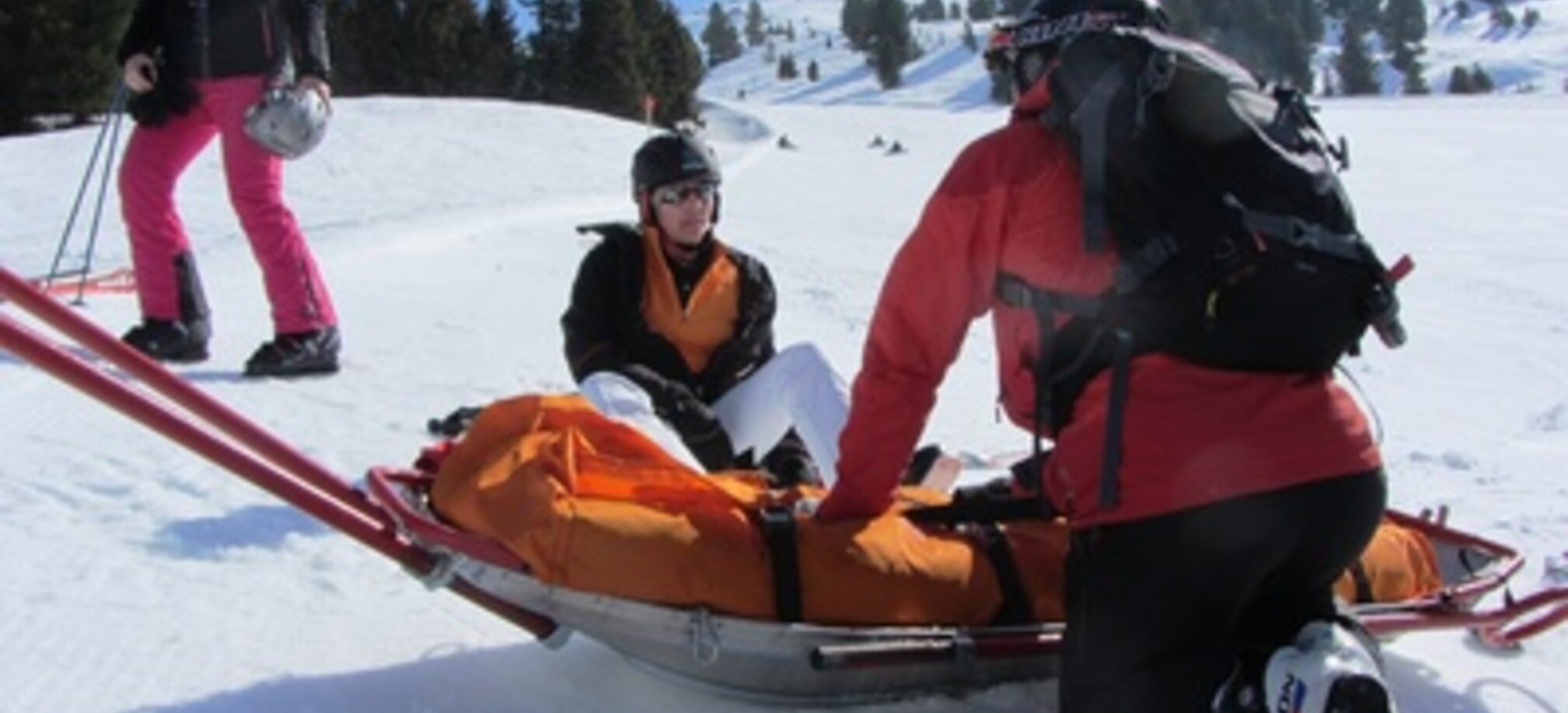When there has been a skiing accident on the mountain, the injured parties are spoken to first to ascertain whether they are conscious or not, or subsequently to either secure off the area as best you can yourself or to ask a passing skier to do it for you.
Afterwards, you can assess the injured in peace and quiet, ascertain which injuries they have and thus decide whether transportation in the direction of the valley or to the gondola station is possible either independently, with help or is not possible at all, or to already start with first aid measures there and then, and at the same time get someone to contact mountain rescue. In Austria the number is 140 or you can use the Euro emergency number, 112. When making this call, think of the 4 W’s and how many people there are!
Where? What? When? Which injury? How many injured people?
Basically, in this situation, everything that is important has already happened. Until the arrival of the rescue services, this person, should of course not be left alone.
So that many injuries can be avoided, there is a lot of protective equipment one can buy in sports shops. The three most important are the ski helmet, ski goggles and back protector.
The figure is ever increasing as to the amount of people on the slopes wearing a helmet. Even when you have a harmless fall, it can quickly turn into a grave and serious injury when it comes to the head area.
The ski goggles are also a protective measure that should not be disregarded. They not only protect the eyes from UV rays, but also from the weather and in worst cases from objects which fly by, such as ski poles.
And last but not least, the back protector. Luckily, its advance on the local slopes can hardly be discouraged, as the spine is also a body part worth protecting when looking at the majority of injuries sustained through skiing. Falls and injuries at high speed, due to the fact that skiing quickly is becoming a trend and that there is always quicker and more professional equipment for hobby skiers on the market means that there is more potential for collisions.
But the most important safety tip is and remains something that money cannot buy and that is to ski with all your senses and with foresight.


